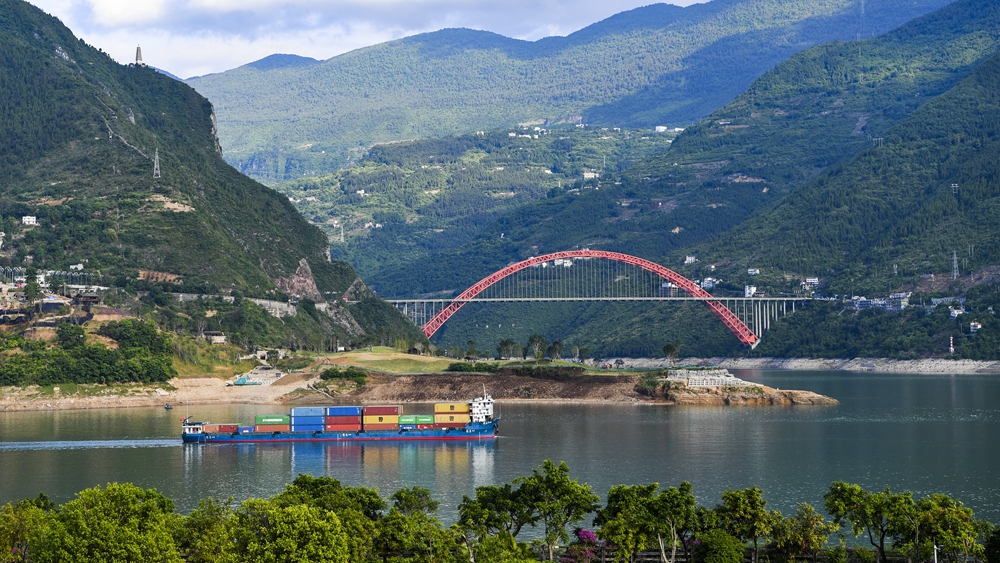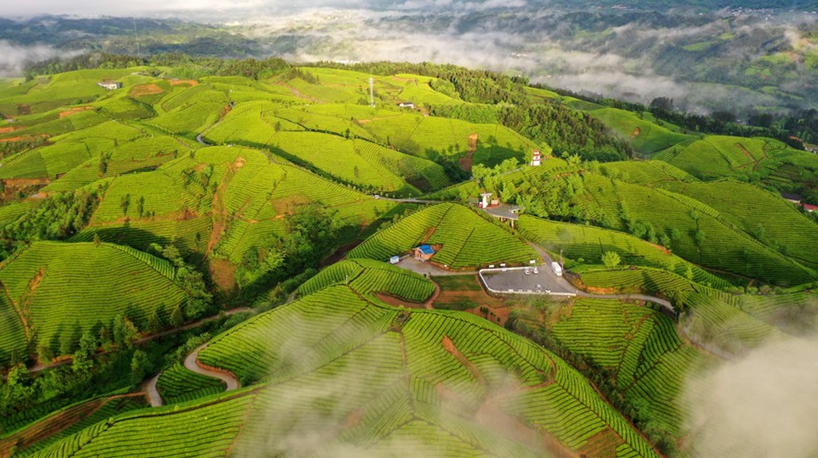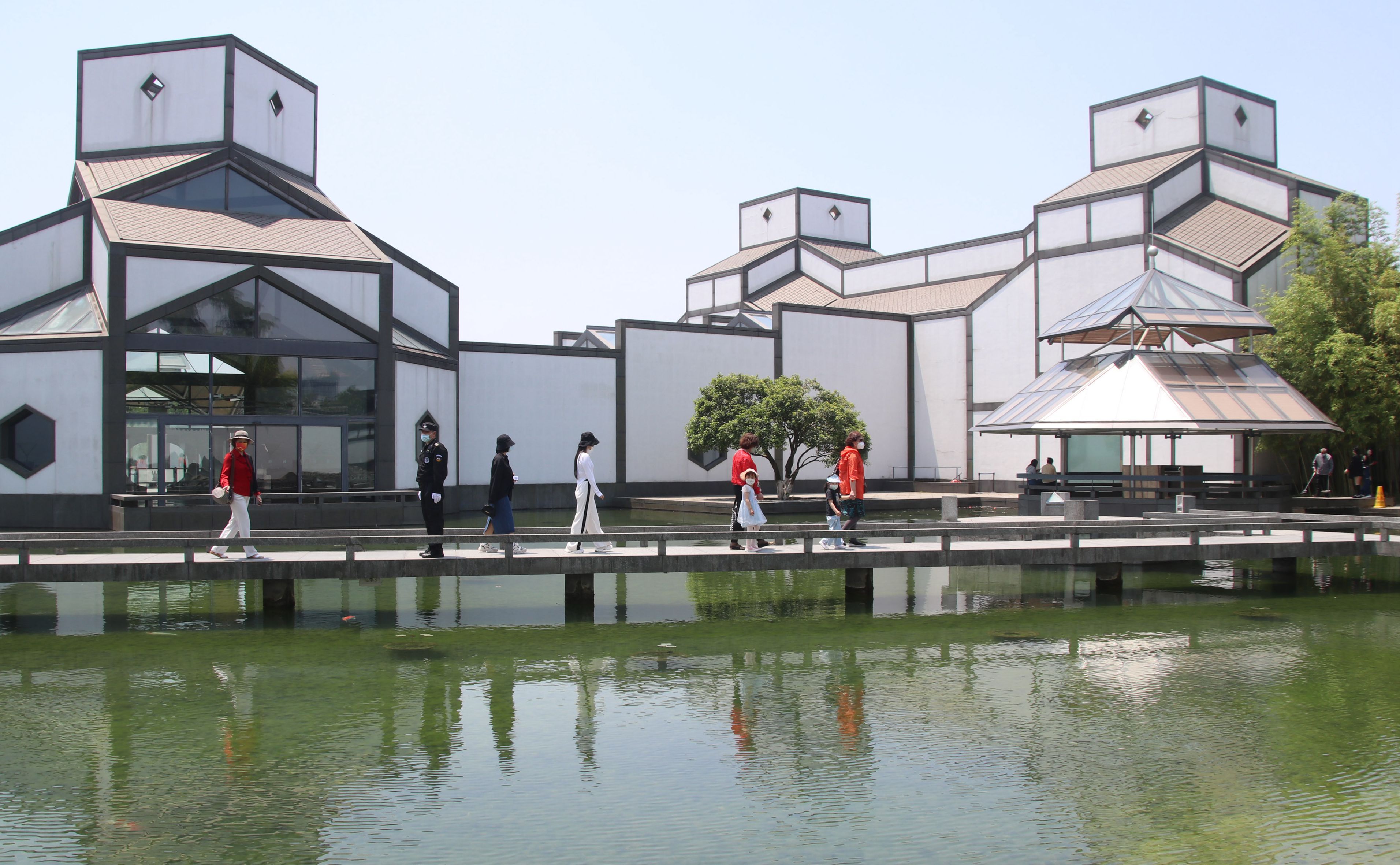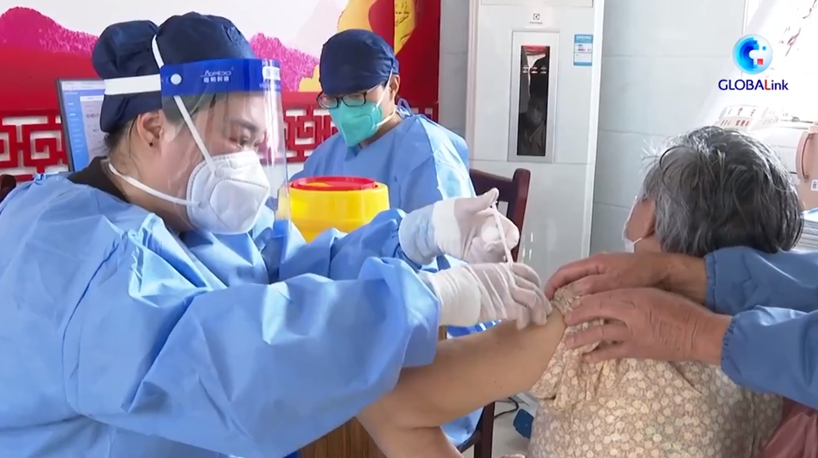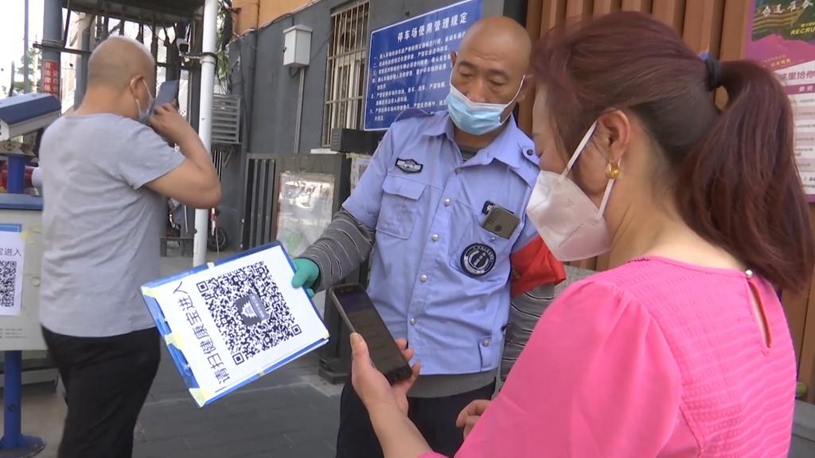
Aerial photo taken on Sept. 28, 2021 shows the headquarters building of the New Development Bank (NDB) in Shanghai, east China. (Xinhua/Fang Zhe)
"We see the partnership with the NDB very positively in the sense that it is an important asset that allows the state to carry out works in important regions," said Helder Barbalho, governor of Para state, in a recent interview here with Xinhua.
by Xinhua writer Luo Jingjing
BELEM, Brazil, May 27 (Xinhua) -- Thanks to the "strategic partnership" with the New Development Bank (NDB), which formally opened in 2015 as a fruit of the BRICS mechanism, the northern Brazilian state of Para has been carrying out an infrastructure construction project that is expected to benefit over 340,000 residents and "improve their quality of life," the state officials have said.
"We see the partnership with the NDB very positively in the sense that it is an important asset that allows the state to carry out works in important regions," said Helder Barbalho, governor of Para state, in a recent interview here with Xinhua.
The NDB, also known as the BRICS bank, officially granted a loan of 50 million U.S. dollars in March 2018 for "The Para Sustainable Municipalities Project" that consists of developing urban mobility, sanitation and communication programs in a number of cities alongside the Trans-Amazonian highway in Para.

Aerial photo taken on Dec. 17, 2020 shows the headquarters building of BRICS New Development Bank (NDB) in east China's Shanghai. (Xinhua/Fang Zhe)
The state government selected nine cities that were established around 1960s and 1970s in the northern regions of Xingu and Tapajos with high productivities in mining, agriculture and animal husbandry but with a relative lack of modern infrastructure and investment, which in turn hindered the development.
The loan from the NDB and initiation of the project have played a significant role in poverty reduction in the nine cities, Ruy Cabral, secretary of urban development and public construction of Para, told Xinhua.
According to the Brazilian Institute of Geography and Statistics, Para is the country's second largest state in terms of territory and the ninth largest in terms of population. However, it shows in the NDB's website that Para is Brazil's fifth poorest state in terms of GDP per capita.
Barbalho expected the strategic partnership with the NDB would help Para attract international investment, facilitate urban infrastructure construction, and sustain economic development.
"The region (of the Trans-Amazonian highway) is a major area for cocoa production in Para, and we have been encouraging the industry a lot as we see cocoa as a means to develop bioeconomy, prevent further degradation of lands, and to fulfill the mission of carbon capture," he explained.
According to the governor, Para is one of the least indebted states among the 27 units of the Brazilian Federation, and he believed that "the fiscal spending must be rewarded by works, services and benefits (to the people)."
Two of the 16 approved projects in Brazil by the NDB are in Para. The board of NDB approved "PARA II - Transport Infrastructure for Regional Development" project in March 2021 with a loan of 153 million dollars, which includes subprojects in five regions comprising 475 km road pavements, several bridges and weight stations to "improve connectivity of the state and to promote regional development."
"We have an urban development index in the middle range due to lack of investments and attention," said Cabral, who believed that the partnership with the NDB "extremely important" in fund raising, attracting investors, improving the community and settling the citizens.
He stressed the importance of investment in infrastructure, mobility and accessibility to foster the sustainable development of the state, and considered the partnership with the NDB as "essential."
"The NDB has been a spectacular partner for the facilities that it has provided us to date, and we hope to extend this partnership further," said the secretary. ■


